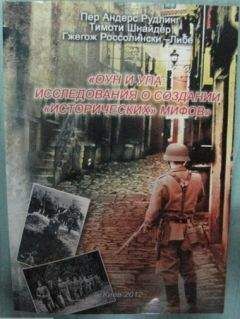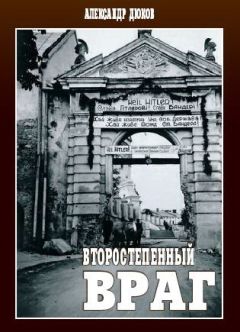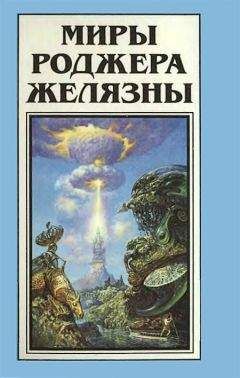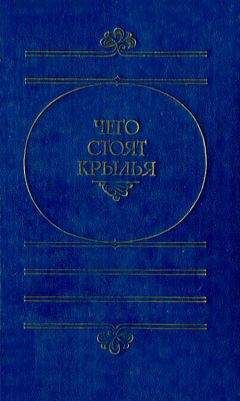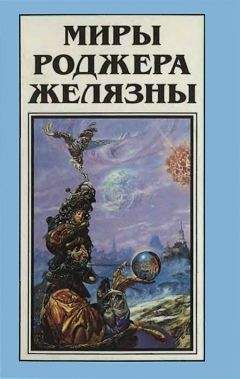158
As late as 1974, the RCMP investigated the “planning [of] a violent act — possibly the kidnapping of a Soviet diplomat in Canada” by the OUN(b). Inquiry 74WLO-2S-83, “Re: Acts of aggression against the Soviet Union in Canada,” inquiry from the RCMP Liaison Offi ce, Washington D.C. to CIA, Washington, DC, December 9, 1974, NARA, RG 263, E ZZ-18, Stephen Bandera Name File, v. 2; Staatsarchiv München, Staatsanwaltschaften 34887, vol. 1, l. 59, document on the OUN in Bavaria written by Inspector Fuchs, September 13, 1960. Thanks to Grzegorz Rossolinski-Liebe for these references.
Heorhyi Kas’ianov, Do pytannia pro ideolohiiu Orhanizatsii Ukrains’kykh Nationalistiv (OUN): analitychnyi ohliad (Kyiv: Instytut Istorii Ukrainy, 2003), 32; Iurii Kyrychuk, Ukrains’kyi natsional’nyi rukh 40-50kh rokiv XX stolittia: ideolohiia ta praktyka (L’viv: Dobra sprava, 2003), 356.
“Protokol’ doprosa obviniaemogo Okhrimovicha, Valieiia Ostapovicha ot 21 oktabria 1952 g.,”HDA SBU, f. 5, spr. 445, t. 1., ark. 219.
Ibid., ark. 241.
Ibid., ark. 44, 48.
Ibid., ark. 69.
Burds, “The Early Cold War,” 16, 55–56.
“Stenogramma protokol doprosa Matvieiko Mirona Vasil’evicha ot 9 1952 g.,” HDA SBU, f. 6, spr. 56232, ark. 173–179.
Ibid., ark. 177; Breitman and Goda, Hitler’s Shadow, 83, citing [Redacted] to Director of Security, January 9, 1956, NARA, RG 263, E ZZ-18, B 6, Stephen Bandera Name File, v. 1; Chief Base Munich to Chief, SR, EGMA-19914, March 29, 1956, NARA, RG 263, E ZZ-18, B 6, Stephen Bandera Name File, v. 2, and enclosures; Deputy Director, Plans, to Department of State, July 1, 1957, NARA, RG 263, E ZZ-18, B 126, Jaroslav Stetsko Name File, v. 1; Joint US-UK Conference, January 20, 1955, NARA, RG 263, E ZZ-19, B 10, Aerodynamic: Operations, v. 12, n. 1; Director, CA to [Redacted], DIR 00782, March 2, 1956, NARA, RG 263, E ZZ-19, B 11, Aerodynamic: Operations, v. 13.
Breitman and Goda, Hitler’s Shadow, 81, citing SR/W2 to SR-DC, EE/SSS, January 13, 1952, NARA, RG 663, E ZZ-19, B 10, Aerodynamic: Operations, v. 10, f. 1.
Breitman and Goda, Hitler’s Shadow, 83, citing “[Redacted] to Director of Security, January 9,1956, NARA, RG 263, E ZZ-18, B 6, Stephen Bandera Name File, v. 1; Chief of Base Munich to Chief, SR, EGMA-19914, March 29, NARA, RG 263, E ZZ-18, B 6, Stephen Bandera Name File, v. 2 and enclosures; Deputy Director, Plans, to Department of State, July 1, 1957, NARA, RG 263, E ZZ-19, B 10, Aerodynamic: Operations, v. 12, n. 1; Director, CIA to [Redacted], DIR 00782, March 2, 1956, NARA, RG 263, E ZZ-19, B 11, Aerodynamic: Operations, v. 13.
Breitman and Goda, Hitler’s Shadow, 80–81.
Breitman and Goda, Hitler’s Shadow, 82, citing “Our Relations with the Ukrainian Nationalists and the Crisis over Bandera,” attached to EGQA-37253, March 12, 1954, NARA, RG 263, E ZZ-19,B 10, Aerodynamics: Operations, v. 10, f.2.
Goda and Breitman, 82, Hitler’s Shadow, citing CIA/State Department — SIS/Foreign Offi ce Talks on Operations Against the USSR, April 23, 1951, NARA, RG 263, E ZZ-19, B 9, Aerodynamics: Operations, v. 9, f. 2.
Breitman and Goda, Hitler’s Shadow, 80.
Breitman and Goda, Hitler’s Shadow, 83, citing “Joint US-UK Conference, January 20, 1955, NARA, RG 263, E ZZ-19, B 10, Aerodynamic: Operations, v. 12, f. 1.
Paveli!’s exiled Ustaše movement, reorganized in 1956 as the Croatian National Liberation Movement (Hrvatski Oslobodila'ki Pokret, HOP), joined Stets’ko’s Anti-Bolshevik Bloc of Nations, and had its European headquarters in Franco’s Spain.
“Protokol doprosa Matvieiko, Mirona Vasil’evicha ot 14–15 iolia 1951 goda,” HDA SBU, f. 6, spr. 56232, ark. 96
Taras Fedoriv, Batkivshchina Bandery (Staryi Uhryniv, Ukraine: Hromas’ka orhanizatsiia “Banderivs’ke zemliatsvo,” 2007), 10.
Slava Stetzko, “A.B.N. Ideas Assert Themselves: The 20th Anniversary of the Anti-Bolshevik Bloc of Nations (A.B.N.), 1943–1963,” The Ukrainian Review 10, no. 3 (Autumn, 1963): 9, Lypovets’kyi, OUN banderivtsi, 76.
“Do Ponevolenykh Narodiv i ikh Emigratsii: Zvernennia IV velykoho Zboru OUN” Vyzvol’nyi shliakh: Suspil’no-politychnyi i naukovo-literaturnyi misiachnyk, kn. 10 (247), (October, 1968): 1166; S. Stetzko, “A.B.N. Ideas Assert Themselves,” 9; Oleksandr Panchenko, “Peredmova,” in Roman Il’nyts’kyi, Dumky pro ukrains’ku vyzvol’nu polityku: Vstupne slovo Oleha Il’nyts’koho (Hadiach: Vydavnytstvo ‘Hadiach,’ 2007), 34.
Father N. Bahatyr, “Molytva pid chas vidkryttia IV Velykoho Zboru OUN,” Vyzvol’nyi shliakh: suspil’no-politychnyi i naukovo literaturnyi misiachnyk, Vol. 11–12 (248–249), (November — December 1968): 1267.
“Protokol doprosa obviniaemogo Okhrimovicha Vasilia Ostapovicha 30 oktabria 1952,” HDA SBU, f. 5, spr. 445, t. 2, ark. 136. Yet, the Reagan administration maintained friendly relations with the OUN(b). In August 1983, Yaroslav Stest’ko was invited to the White House and received by President Reagan and Vice President Bush. “Ukraina staie predmetom svitovoi politiky: u 25-littia tyzhnia ponevolenykh narodiv i 40-richcha ABN,” Homin Ukrainy, August 17, 1983: 1, 3; “Politychnyi aspekt vidznachennia richnyts’: TPN i ABN,” Homin Ukrainy, August 24, 1983: 1, 4.
Panchenko, “Peredmova,” 32, 41.
Handwritten testimony by Vasyl’ Kuk, “Kharakterystyka osib natsionalistychnykh seredovyshch za kordonom: Seredovyshche Zch OUN,” HDA SBU, f. 6, spr. 51895, t. 2, ark. 37.
“Protokol doprosa obviniaemogo Okhrimovich Vasiliia Ostapovicha ot 11 dekabria 1952 g.,” HDA SBU, f. 5, spr.445, t.4,ark. 30.
Burds, The Early Cold War, 13, citing a secret report of CIC Special Agent Vadja V. Kolombatovic to Commanding Offi cer, CIC Region III, 6 May 1947, INSCOM Dossier ZF010016WJ, 1906–9.
Breitman and Goda, Hitler’s Shadow, 86, Card Ref. D 82270, July 22, 1947, NARA, RG 319, E 134B, B 757, Mykola Lebed’ IRR Personal File, Box 757.
“Protokol doprosa obviniaemogo Okhrimovicha Vasilia Ostapovicha ot 1 1952 g.,” HDA SBU, f. 5, spr. 445, t. 2, ark. 183.
Holian, “Anticommunism in the Streets,” 138.
Breitman and Goda, Hitler’s Shadow, 88–89.
The Immigration and Naturalization Services saw in Lebed’ a “clear-cut deportation case” due to his wartime record with its “wholesale murders of Ukrainians, Poles and Jewish (sic),” but he was protected by CIA Assistant Director Allen Dulles’s personal intervention. Breitman and Goda, Hitler’s Shadow, 86, citing NARA, RG 263, E ZZ-18, Box 80, Mykola Lebed Name File, v. 1.
Breitman and Goda, Hitler’s Shadow, 88.
“Report details ties between US and ex-Nazis,” Associated Press, December 10, 2010: http://www.google.com/hostednews/ap/article/ALeqM5hJe2eJeWstJo3-tpdA7nw-vGP6Tg?docId=3faa07027f724e5da4c1837d8c41b788 (accessed December 15, 2010).
“Protokol doprosa obviniaemo Okhrimovicha Vasiliia Ostapovicha ot 21 oktiabria 1952 g.,”HDA SBU, f. 5, spr. 445, t. 1, ark. 220.
Charles T. O’Connell, The Munich Institute for the Study of the USSR: Origin and Social Composition, Carl Beck Papers in Russian and East European Studies 808. (Pittsburgh: University Center for Russian and East European Studies, 1990), 9f, 28–32. The Ukrainian National Rada, led by Andrii Livyts’kyi, at the time consisted primarily of by Petliurites and members of the OUN(m). By cooperating with Russian anticommunists, Bandera believed that the Melnykites had “broken the united front of hostility toward so-called cooperation with. Muscovite imperialists and their protectors.” “Pis’mo Glavaria ZCh OUN Bandera Stepana, adresovannoe ‘Provodu’ OUN na Ukrainskikh zamliakh,‘Provodu’ OUN L’vovskogo kraia, druz’iam Chernomu i Usmikhu,” June 1955, HDA SBU, f. 13, spr. 379, t. 2, ark. 191.
Arch Puddington, Broadcasting Freedom: The Cold War Triumph of Radio Free Europe and Radio Liberty (Lexington: The University Press of Kentucky, 2000), 168.
Evhen Shtendera (b. 1924) served as commander of political education in the UPA. Serhiichuk, Stepan Bandera, 3:8–9. See also HDA SBU, f. 5, spr. 445, t. 3, ark. 100–129, published in ibid., 3: 318. After the war he became a librarian at the University of Regina, main editor of the Litopys UPA, and from 1992, an instructor at the L’viv Polytechnic Institute.
Wolodymyr Kosyk (b. 1924) combined his academic career with clandestine activities in the OUN(b) and its youth section, the Ukrainian Youth Association, (Spilka Ukrains’koi Molodi, SUM). After the war he taught at the Ukrainian Free University in Munich. In 1957 he led an ABN mission in Taipei, in Chiang Kai-shek’s Nationalist China. He published his research both with the Ukrainian Free University in Munich and in the Banderite intellectual jounral Vyzvol’nyi shliakh. Zirka Vitoshyns’ka, “Volodymyr Kosyk: ‘Politychni podii vidbuvaiut’sia ne v zamknenomu koli iakohos’ narodu, a v pevnomu vnutrishn’omu i zovnishn’omu politychnomu kontksti,’” Dzerkalo Tyzhdnia, August 19, 2006: http://www.dt.ua/newspaper/articles/47531 (accessed January 18, 2011); S. Stetzko, “A.B.N. Ideas Assert Themselves,”11. For his research, Kosyk was awarded a gold medal from the Ukrainian Free University in Munich in 2000, and the order For Merit (Za zaslugi) of the third degree from President Yushchenko himself in 2005. He is honorary director of the Center for the Study of the Liberation Movement in L’viv.
Taras Hunczak (b. 1932), with his brother, sister, and father, were members of the OUN. Taras Hunczhak, Moi spohady — stezhky zhyttia (Kyiv: Dnipro, 2005), 16, 22, 30.
On Veryha (1922–2009) in Waffen-SS, see Vasyl’ Veryha, Pid krylamy vyzvol’nykh dum (Kyiv: Vydavnytstvo imemi Oleny Telihy, 2007). His works have been published by the Canadian Institute of Ukrainian Studies. See, for instance, Wasyl Veryha, ed., The Correspondence of the Ukrainian Central Committee in Cracow and Lviv with the German authorities, 1939–1944 (Edmonton: Canadian Institute of Ukrainian Studies Press, University of Alberta, 2000).
Oleksa Horbatsch (1915–1997) was assistant professor at the Ukrainian Free University in Munich 1965–1967, full professor 1971–1990, professor emeritus 1991–1997. Mykola Shafoval and Roman Iremko, eds., Universitas Libera Ucrainensis: 1921–2006 (Munich: Ukrainische Freie Universität, 2006), 122. Horbatsch was proud of his service as a soldier in the Waffen-SS and a regular contributor to the veterans’ journal Visti kombatanta. Bohdan Matsiv, ed., Ukrains’ka dyviziia “Halychyna”: Istoryia u svitlynakh vid zasnuvannia u 1943 r. Do zvil’nennia z polonu 1949 r. (Lviv: ZUKTs, 2009), 218–219, 254; Mykola Mushynka, “Ioho biohrafi ia v ioho naukovykh pratsiakh: Do 75-richcha z dnia narodzhennia Prof. Oleksy Horbacha z Nimechchyny,” Druzhno vpered: Shchomisiachnyi kul’turnohromads’kyi iliustrovanyi zhurhnal, vydae Soiuz rusyniv-ukraintsiv Slovachchyny, no. 3 (1993): 13.
Petro Savaryn (b. 1926) never held an academic position, but was one of the founders of the Canadian Institute of Ukrainian Studies and chancellor of the University of Alberta 1984–87. He also served as president of the World Congress of Free Ukrainians 1983–1987, and the Alberta Progressive Conservative party. He is also active in the society of the veterans of the Waffen-SS Galizien. Petro Savaryn, Z soboiu vzialy Ukrainu: Vid Tarnopillia do Al’berty (Kyiv: KVITs, 2007), 275.
Ivan Hryn’okh (1909–1994), veteran and chaplain of the Nachtigall and Schutzmannschaft Battalion 201, worked at the Ukrainian Free University in Munich, as assistant professor 1974–1977, full professor 1978–1990, professor emeritus 1991–1994. Shafoval and Iaremko, Universitas Libera Ucrainensis, 122.
Petro Mirchuk (1913–1999) was arrested by the Germans in 1941 and spent the war in internment camps, including Auschwitz. Immediately after the war he was responsible for OUN(b) propaganda in occupied Germany. He was one of Stepan Bandera’s close allies and a stern adherent of totalitarianism. Mirchuk’s writings are representative of the sort of pseudo-scholarship the OUN(b) produced after the war. He received a J.D. in 1941 and a Ph.D. in 1969 from the Ukrainian Free University in Munich, and wrote several widely cited chronicles on the history of the OUN. He combined academic activities with high-ranking positions in the OUN(b). Posivnych, Zhyttia i diial’nist’ Stepana Bandery, 140. Mirchuk was also used as an “expert” for the defense during the OSI hearings on deportation.
